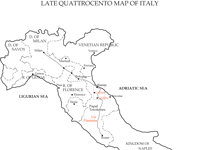Image, Animation, Video, Slide, and Sound Galleries
Animation Gallery
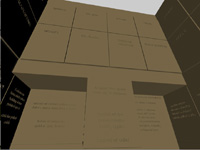 Urbino Studiolo
Urbino Studiolo
|
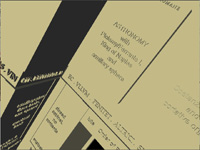 Gubbio Studiolo
Gubbio Studiolo
|
Video Gallery
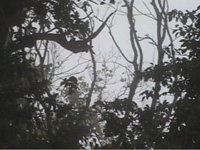 Urbino Day
Urbino Day
|
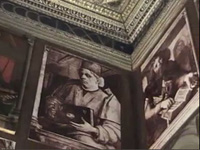 Ekphrasis, Urbino Studiolo
Ekphrasis, Urbino Studiolo
|
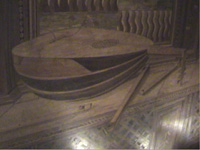 Anamorphosis, Urbino Studiolo
Anamorphosis, Urbino Studiolo
|
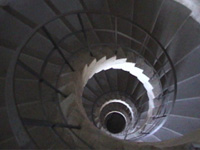 Spiral stairs, Urbino: the duke's descent and ascent
Spiral stairs, Urbino: the duke's descent and ascent
|
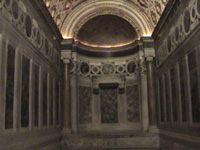 Urbino Tempietti
Urbino Tempietti
|
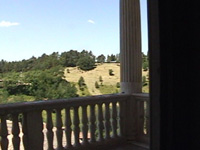 Urbino Studiolo Loop
Urbino Studiolo Loop
|
Slide Gallery
 Studioli Slideshow
Studioli Slideshow
|
Sound Gallery
Field recordings and editing by Melissa Grey
| Urbino Dawn | Urbino Bells |
| Urbino Palace | Urbino Afternoon |
| Urbino Caffé | |
Image Gallery
Chapter 1
^Image GalleryChapter 2
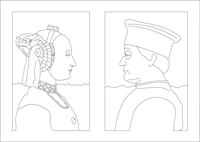 Fig. 2.1. Battista Sforza and Federico da Montefeltro. Fig. 2.1. Battista Sforza and Federico da Montefeltro.Extended Caption 1 |
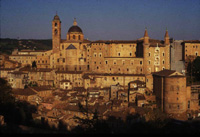 Fig. 2.2. The city of Urbino and the ducal palace. Fig. 2.2. The city of Urbino and the ducal palace.
|
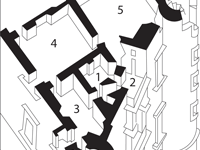 Fig. 2.3. Axonometric detail of the Urbino ducal palace. Fig. 2.3. Axonometric detail of the Urbino ducal palace.
|
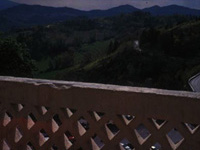 Fig. 2.4. View from loggia outside studiolo. Fig. 2.4. View from loggia outside studiolo.
|
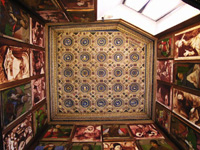 Fig. 2.5. View of ceiling and gallery of 28 illustrious men, Urbino studiolo. Fig. 2.5. View of ceiling and gallery of 28 illustrious men, Urbino studiolo.
|
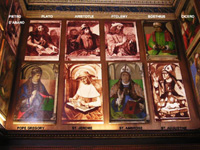 Fig. 2.6. Illustrious men at north wall of Urbino studiolo. Fig. 2.6. Illustrious men at north wall of Urbino studiolo.
|
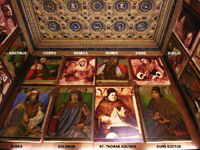 Fig. 2.7. Illustrious men at east wall of Urbino studiolo. Fig. 2.7. Illustrious men at east wall of Urbino studiolo.
|
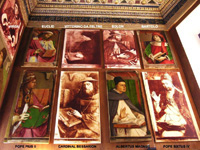 Fig. 2.8. Illustrious men at south wall of Urbino studiolo. Fig. 2.8. Illustrious men at south wall of Urbino studiolo.
|
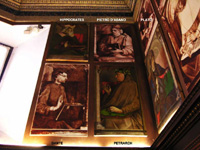 Fig. 2.9. Illustrious men at west wall of Urbino studiolo. Fig. 2.9. Illustrious men at west wall of Urbino studiolo.
|
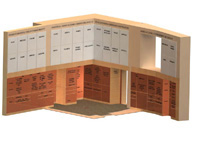 Fig. 2.10. Directly beneath "FEDERICVS" we find Plato and Aristotle placed side-by-side. Fig. 2.10. Directly beneath "FEDERICVS" we find Plato and Aristotle placed side-by-side.
|
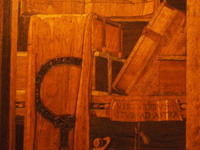 Fig. 2.11. Cabinet, north wall. Fig. 2.11. Cabinet, north wall.
|
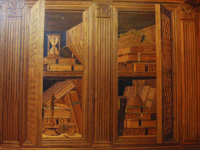 Fig. 2.12. Cabinet, north wall. Fig. 2.12. Cabinet, north wall.
|
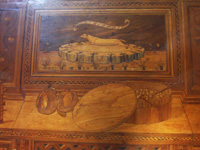 Fig. 2.13. Candied fruit on bench, north wall. Fig. 2.13. Candied fruit on bench, north wall.
|
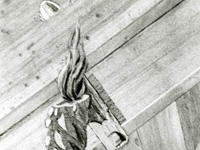 Fig. 2.14. Lit candle, north wall. Fig. 2.14. Lit candle, north wall.
|
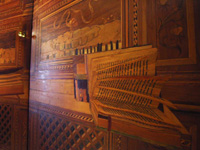 Fig. 2.15. Twenty-four objects are displayed on the benches at Urbino. Fig. 2.15. Twenty-four objects are displayed on the benches at Urbino.
|
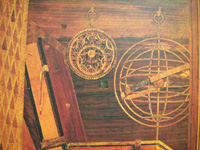 Fig. 2.16. Astrolabe and armillary sphere, Urbino studiolo. Fig. 2.16. Astrolabe and armillary sphere, Urbino studiolo.
|
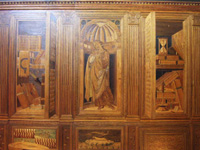 Fig. 2.17. Hope, north wall, Urbino studiolo. Fig. 2.17. Hope, north wall, Urbino studiolo.
|
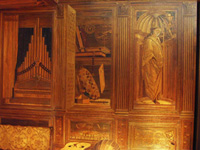 Fig. 2.18. Faith, south wall, Urbino studiolo. Fig. 2.18. Faith, south wall, Urbino studiolo.
|
 Fig. 2.19. Charity, west wall, Urbino studiolo. Fig. 2.19. Charity, west wall, Urbino studiolo.
|
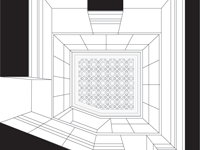 Fig. 2.20. Worm's eye view of the Urbino studiolo walls and ceiling, drawn by author and Amelia Amelia. Fig. 2.20. Worm's eye view of the Urbino studiolo walls and ceiling, drawn by author and Amelia Amelia.
|
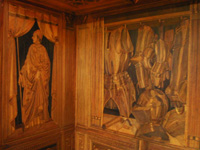 Fig. 2.21. Northeast corner of Urbino intarsia, with Federico in humanist's robes and his armor at right. Fig. 2.21. Northeast corner of Urbino intarsia, with Federico in humanist's robes and his armor at right.
|
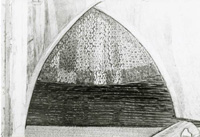 Fig. 2.22. Detail of chain mail, Urbino studiolo. Fig. 2.22. Detail of chain mail, Urbino studiolo.
|
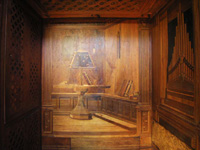 Fig. 2.23. Southeast corner of Urbino intarsia, with miniature studiolo at left and an organ at right. Fig. 2.23. Southeast corner of Urbino intarsia, with miniature studiolo at left and an organ at right.
|
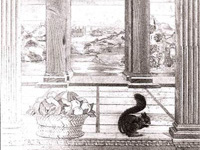 Fig. 2.24. Civic space at the center of the east wall, Urbino studiolo. Fig. 2.24. Civic space at the center of the east wall, Urbino studiolo.
|
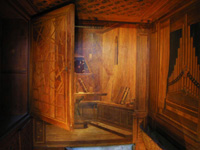 Fig. 2.25. There was likely some debate over a seven- or eight-sided figure for the cabinet door. Fig. 2.25. There was likely some debate over a seven- or eight-sided figure for the cabinet door.
|
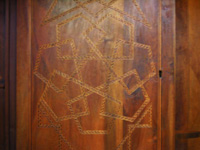 Fig. 2.26. Heptagonal figure, Urbino studiolo. Fig. 2.26. Heptagonal figure, Urbino studiolo.
|
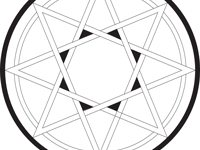 Fig. 2.27. Unicursal octagonal figure drawn by Amelia Amelia after Fra Carnivale. Fig. 2.27. Unicursal octagonal figure drawn by Amelia Amelia after Fra Carnivale.
|
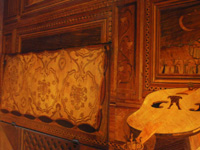 Fig. 2.28. Heptagonal floral pattern on upturned "bench." Fig. 2.28. Heptagonal floral pattern on upturned "bench."
|
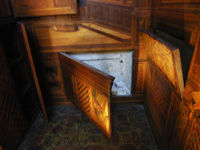 Fig. 2.29. Operable intarsia panels folded open, Urbino studiolo. Fig. 2.29. Operable intarsia panels folded open, Urbino studiolo.
|
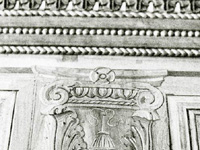 Fig. 2.30. Devices in the dado at Urbino and Gubbio include an ostrich, an ermine, olive and oak trees, and a crane. Fig. 2.30. Devices in the dado at Urbino and Gubbio include an ostrich, an ermine, olive and oak trees, and a crane.
|
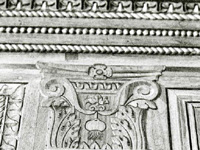 Fig. 2.31. Exploding grenade, north wall, Urbino studiolo. Fig. 2.31. Exploding grenade, north wall, Urbino studiolo.
|
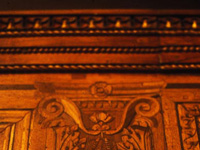 Fig. 2.32. Bridle, north wall, Urbino studiolo. Fig. 2.32. Bridle, north wall, Urbino studiolo.
|
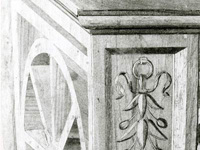 Fig. 2.33. Bench wheels, Urbino studiolo. Fig. 2.33. Bench wheels, Urbino studiolo.
|
 Fig. 2.34. View from loggia outside studiolo. Fig. 2.34. View from loggia outside studiolo.
|
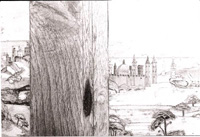 Fig. 2.35. Detail of distant city, east wall, Urbino studiolo. Fig. 2.35. Detail of distant city, east wall, Urbino studiolo.
|
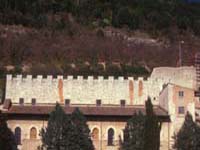 Fig. 2.36. View of Gubbio ducal palace. Fig. 2.36. View of Gubbio ducal palace.
|
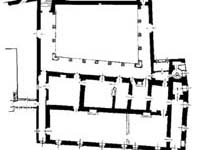 Fig. 2.37. Plan of Gubbio ducal palace, with studiolo noted as Room 1. Fig. 2.37. Plan of Gubbio ducal palace, with studiolo noted as Room 1.
|
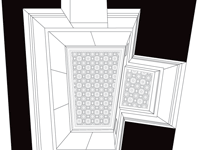 Fig. 2.38. Worm's eye view of the Gubbio studiolo, drawn by author and Amelia Amelia. Fig. 2.38. Worm's eye view of the Gubbio studiolo, drawn by author and Amelia Amelia.
|
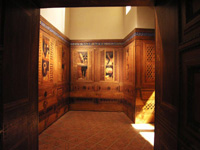 Fig. 2.39. View of Gubbio studiolo from entrance. Fig. 2.39. View of Gubbio studiolo from entrance.
|
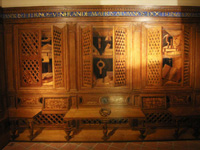 Fig. 2.40. Northwest wall, Gubbio studiolo. Fig. 2.40. Northwest wall, Gubbio studiolo.
|
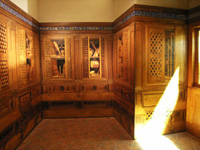 Fig. 2.41. Northeast wall, Gubbio studiolo. Fig. 2.41. Northeast wall, Gubbio studiolo.
|
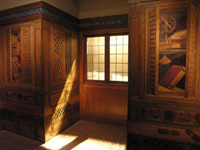 Fig. 2.42. Southeast wall, Gubbio studiolo. Fig. 2.42. Southeast wall, Gubbio studiolo.
|
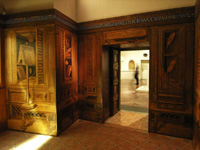 Fig. 2.43. Southwest wall, Gubbio studiolo. Fig. 2.43. Southwest wall, Gubbio studiolo.
|
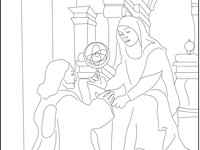 Fig. 2.44. Goddess Astronomy with Ptolemy/Ferrante I. Fig. 2.44. Goddess Astronomy with Ptolemy/Ferrante I.
|
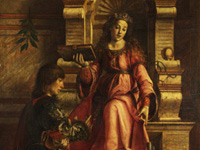 Fig. 2.45. Goddess Music with Costanzo Sforza. Fig. 2.45. Goddess Music with Costanzo Sforza.
|
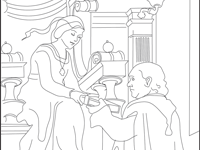 Fig. 2.46. Goddess Dialectic with Federico da Montefeltro. Fig. 2.46. Goddess Dialectic with Federico da Montefeltro.
|
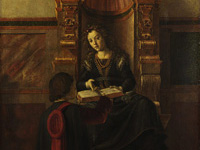 Fig. 2.47. Goddess Rhetoric with Guidobaldo da Montefeltro. Fig. 2.47. Goddess Rhetoric with Guidobaldo da Montefeltro.
|
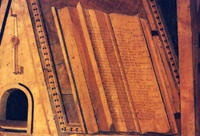 Fig. 2.48. Lectern and opened manuscript of Virgil's Aeneid, Gubbio studiolo. Fig. 2.48. Lectern and opened manuscript of Virgil's Aeneid, Gubbio studiolo.
|
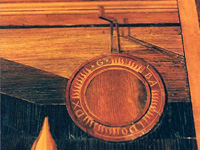 Fig. 2.49. Mirror with Guidobaldo's initials. Fig. 2.49. Mirror with Guidobaldo's initials.
|
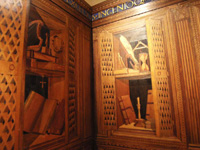 Fig. 2.50. North corner of Gubbio studiolo. Fig. 2.50. North corner of Gubbio studiolo.
|
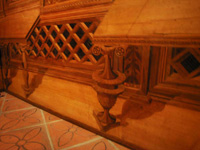 Fig. 2.51. Bench legs, Gubbio studiolo. Fig. 2.51. Bench legs, Gubbio studiolo.
|
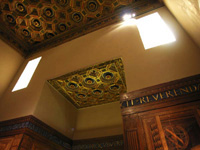 Fig. 2.52. Ceiling and funnel windows, Gubbio studiolo. Fig. 2.52. Ceiling and funnel windows, Gubbio studiolo.
|
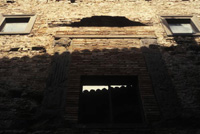 Fig. 2.53. Exterior façade of Gubbio studiolo. Fig. 2.53. Exterior façade of Gubbio studiolo.
|
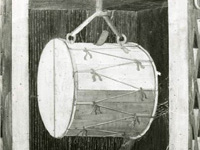 Fig. 2.54. Pipe and tabor, candied fruits, Gubbio studiolo. Fig. 2.54. Pipe and tabor, candied fruits, Gubbio studiolo.
|
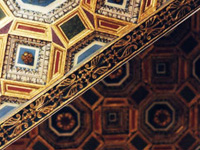 Fig. 2.55. Detail of ceiling, Gubbio studiolo. Fig. 2.55. Detail of ceiling, Gubbio studiolo.
|
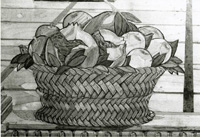 Fig. 2.56. Basket with fruit, Urbino studiolo. Fig. 2.56. Basket with fruit, Urbino studiolo.
|
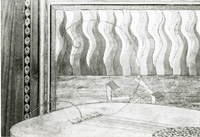 Fig. 2.57. Lute with broken strings, Urbino studiolo. Fig. 2.57. Lute with broken strings, Urbino studiolo.
|
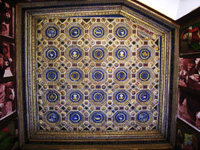 Fig. 2.58. Ceiling, Urbino studiolo. Fig. 2.58. Ceiling, Urbino studiolo.
|
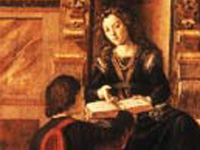 Fig. 2.59. Montage of vertical axis in northwest wall, Gubbio studiolo. Fig. 2.59. Montage of vertical axis in northwest wall, Gubbio studiolo.
|
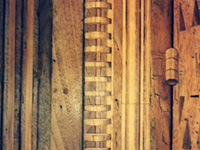 Fig. 2.60. Threaded disc surrounds, Gubbio studiolo. Fig. 2.60. Threaded disc surrounds, Gubbio studiolo.
|
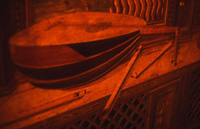 Fig. 2.61. Lute anamorphosis, part 1, Urbino studiolo. Fig. 2.61. Lute anamorphosis, part 1, Urbino studiolo.
|
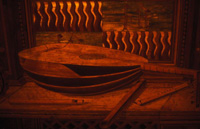 Fig. 2.62. Lute anamorphosis, part 2, Urbino studiolo. Fig. 2.62. Lute anamorphosis, part 2, Urbino studiolo.
|
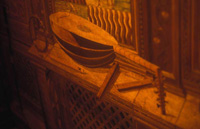 Fig. 2.63. Lute anamorphosis, part 3, Urbino studiolo. Fig. 2.63. Lute anamorphosis, part 3, Urbino studiolo.
|
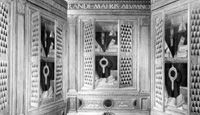 Fig. 2.64. Author's montage of cabinet doors from three positions to demonstrate their "swing." Fig. 2.64. Author's montage of cabinet doors from three positions to demonstrate their "swing."
|
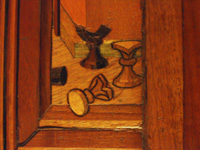 Fig. 2.65. Chess pieces, Urbino studiolo. Fig. 2.65. Chess pieces, Urbino studiolo.
|
 Fig. 2.66. Small scale portrait of Duke Federico. Fig. 2.66. Small scale portrait of Duke Federico.
|
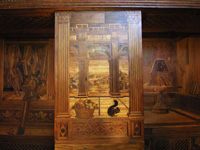 Fig. 2.67. East wall of Urbino studiolo. Fig. 2.67. East wall of Urbino studiolo.
|
 Fig. 2.68. Civic space, east wall, Urbino studiolo. Fig. 2.68. Civic space, east wall, Urbino studiolo.
|
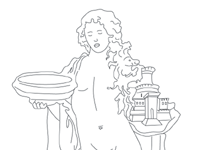 Fig. 2.69. Dinocrates presenting the model of a city to Alexander the Great. Fig. 2.69. Dinocrates presenting the model of a city to Alexander the Great.
|
 Fig. 2.70. An equivalent of the Urbino studiolo's east wall at Gubbio? Fig. 2.70. An equivalent of the Urbino studiolo's east wall at Gubbio?
|
Chapter 3
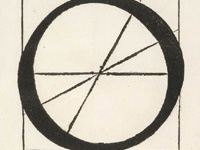 Fig. 3.1. The "most perfect" O. Fig. 3.1. The "most perfect" O.
|
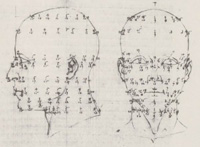 Fig. 3.2. Mensurations of the human head. Fig. 3.2. Mensurations of the human head.
|
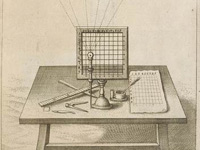 Fig. 3.3. A perspectival velo of intersections. Fig. 3.3. A perspectival velo of intersections.
|
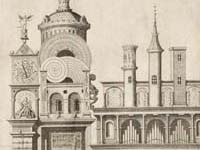 Fig. 3.4. A musical memory palace. Fig. 3.4. A musical memory palace.
|
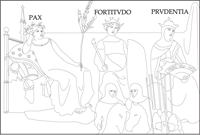 Fig. 3.5. Detail of the virtues from the Allegory of Good Government. Fig. 3.5. Detail of the virtues from the Allegory of Good Government.Extended Caption 2 |
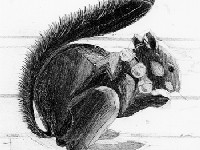 Fig. 3.6. Collared squirrel, Urbino studiolo. Fig. 3.6. Collared squirrel, Urbino studiolo.Extended Caption 3 |
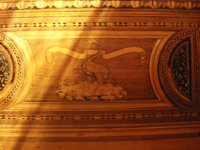 Fig. 3.7. Crane, Gubbio studiolo. Fig. 3.7. Crane, Gubbio studiolo.Extended Caption 3 |
 Fig. 3.8. Astrolabe and armillary sphere, Urbino studiolo. Fig. 3.8. Astrolabe and armillary sphere, Urbino studiolo.Extended Caption 4 |
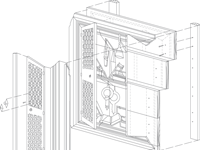 Fig. 3.9. Exploded axonometric of assembly of an intarsia panel in the Gubbio studiolo. Fig. 3.9. Exploded axonometric of assembly of an intarsia panel in the Gubbio studiolo.Extended Caption 5 |
 Fig. 3.10. Mirror, Gubbio studiolo. Fig. 3.10. Mirror, Gubbio studiolo.Extended Caption 6 |
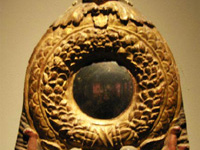 Fig. 3.11. Convex mirror and surround fabricated by the Maiano brothers, 1480. Fig. 3.11. Convex mirror and surround fabricated by the Maiano brothers, 1480.Extended Caption 6 | |
Chapter 4
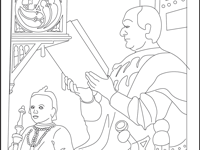 Fig. 4.1. Double Portrait of Federico and Guidobaldo da Montefeltro. Fig. 4.1. Double Portrait of Federico and Guidobaldo da Montefeltro.Extended Caption 7 |
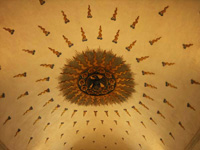 Fig. 4.2. The ducal library's ceiling at Urbino. Fig. 4.2. The ducal library's ceiling at Urbino.
|
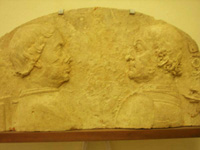 Fig. 4.3. Ottaviano degli Ubaldini and Federico da Montefeltro. Fig. 4.3. Ottaviano degli Ubaldini and Federico da Montefeltro.
|
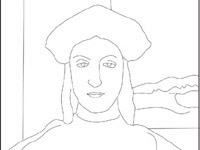 Fig. 4.4. Guidobaldo da Montefeltro. Fig. 4.4. Guidobaldo da Montefeltro.
|
 Fig. 4.5. Vittorino da Feltre, Federico's teacher, among the illustrious men in the Urbino studiolo. Fig. 4.5. Vittorino da Feltre, Federico's teacher, among the illustrious men in the Urbino studiolo.
|
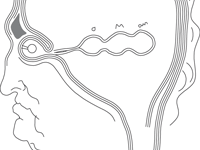 Fig. 4.6. Section of human head after Leonardo. Fig. 4.6. Section of human head after Leonardo.Extended Caption 8 |
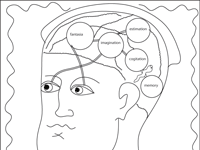 Fig. 4.7. Diagram of human mind after Galen. Fig. 4.7. Diagram of human mind after Galen.Extended Caption 8 |
 Fig. 4.8. Diagram of human mind after Lokhorst and Kaitaro's model of Costa ben Luca. Fig. 4.8. Diagram of human mind after Lokhorst and Kaitaro's model of Costa ben Luca.Extended Caption 8 |
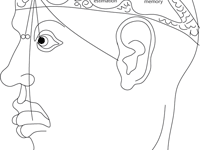 Fig. 4.9. Diagram of human mind after Avicenna. Fig. 4.9. Diagram of human mind after Avicenna.Extended Caption 8 |
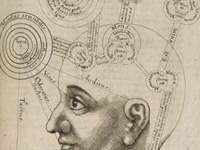 Fig. 4.10. Diagram of the human mind. Fig. 4.10. Diagram of the human mind.Extended Caption 8 |
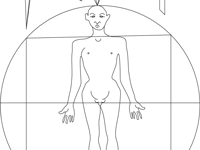 Fig. 4.11. Instrumental demonstration of rectitude. Fig. 4.11. Instrumental demonstration of rectitude.Extended Caption 9 |
 Fig. 4.12. Perspectival "butterfly," after missing figure at Gubbio studiolo. Fig. 4.12. Perspectival "butterfly," after missing figure at Gubbio studiolo.Extended Caption 10 |
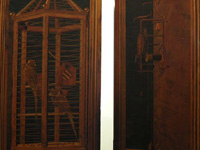 Fig. 4.13. Papagalli and mechanical clock, Urbino studiolo. Fig. 4.13. Papagalli and mechanical clock, Urbino studiolo.Extended Caption 11 |
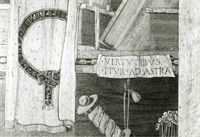 Fig. 4.14. Detail of north wall, Urbino studiolo. Fig. 4.14. Detail of north wall, Urbino studiolo.
|
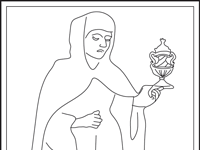 Fig. 4.15. Gramatica XXI after traditional Tarocchi di Mantegna. Fig. 4.15. Gramatica XXI after traditional Tarocchi di Mantegna.Extended Caption 12 |
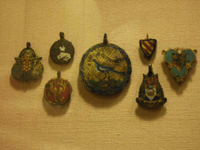 Fig. 4.16. Late quattrocento emblems worn with armor. Fig. 4.16. Late quattrocento emblems worn with armor.Extended Caption 12 |
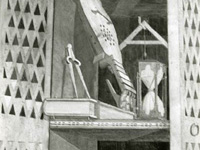 Fig. 4.17. Ingenioq cabinet, Gubbio studiolo. Fig. 4.17. Ingenioq cabinet, Gubbio studiolo.Extended Caption 13 |
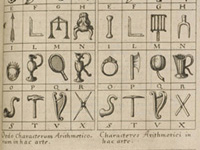 Fig. 4.18. Alphabetic mnemonics. Fig. 4.18. Alphabetic mnemonics.Extended Caption 14 |
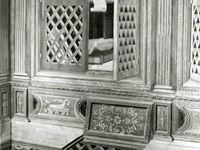 Fig. 4.19. Cabinet with hunting horn, Gubbio studiolo. Fig. 4.19. Cabinet with hunting horn, Gubbio studiolo.Extended Caption 14 |
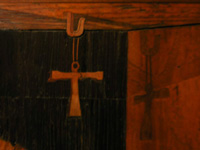 Fig. 4.20. Tau-shaped tuning key, Gubbio studiolo. Fig. 4.20. Tau-shaped tuning key, Gubbio studiolo.Extended Caption 14 |
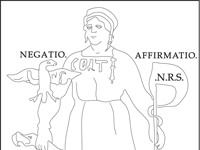 Fig. 4.21. Cipher of Gramatica. Fig. 4.21. Cipher of Gramatica.Extended Caption 14 |
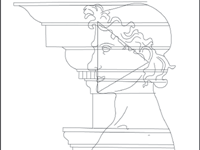 Fig. 4.22. Superimposition of human and building profiles. Fig. 4.22. Superimposition of human and building profiles.
|
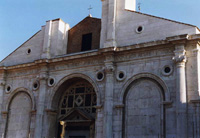 Fig. 4.23. The Tempio Malatestiana, Rimini. Fig. 4.23. The Tempio Malatestiana, Rimini.
|
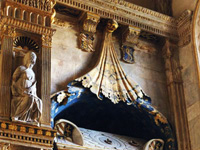 Fig. 4.24. Sarcophagus of Sigismondo Malatesta, Tempio Malatestiana. Fig. 4.24. Sarcophagus of Sigismondo Malatesta, Tempio Malatestiana.
|
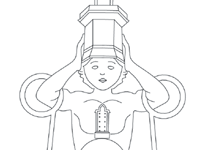 Fig. 4.25. Superimposition of fortress and human body. Fig. 4.25. Superimposition of fortress and human body.Extended Caption 15 |
 Fig. 4.26. Drawing of medal. Fig. 4.26. Drawing of medal.
|
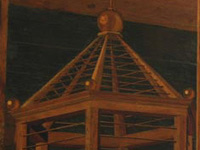 Fig. 4.27. Papagalli and cage, Urbino studiolo. Fig. 4.27. Papagalli and cage, Urbino studiolo.Extended Caption 16 |
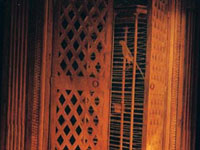 Fig. 4.28. Papagallo and birdcage, Gubbio studiolo. Fig. 4.28. Papagallo and birdcage, Gubbio studiolo.Extended Caption 16 |
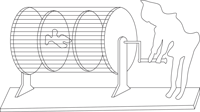 Fig. 4.29. Image of a spinning birdcage. Fig. 4.29. Image of a spinning birdcage.Extended Caption 16 |
 Fig. 4.30. The reticulated grid became a "dominant" feature of medieval mnemonics. Fig. 4.30. The reticulated grid became a "dominant" feature of medieval mnemonics.
|
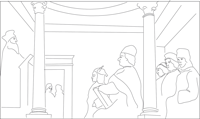 Fig. 4.31. Federico and Guidobaldo listening attentively to an oration. Fig. 4.31. Federico and Guidobaldo listening attentively to an oration.
|
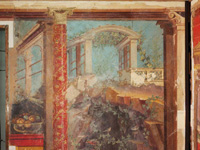 Fig. 4.32. Ornament in the cubiculum from the villa of P. Fannius Synistor, ca. 50-40 BCE. Fig. 4.32. Ornament in the cubiculum from the villa of P. Fannius Synistor, ca. 50-40 BCE.
|
 Fig. 4.33. Sevenfold flowers, thistle-like artichokes and pomegranates in an intarsiated cushion at Urbino. Fig. 4.33. Sevenfold flowers, thistle-like artichokes and pomegranates in an intarsiated cushion at Urbino.
|
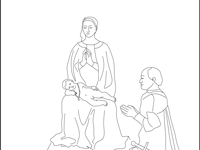 Fig. 4.34. Detail from Piero della Francesca's Brera Altarpiece. Fig. 4.34. Detail from Piero della Francesca's Brera Altarpiece.
|
 Fig. 4.35. St. Augustine among the illustrious men in the Urbino studiolo. Fig. 4.35. St. Augustine among the illustrious men in the Urbino studiolo.
|
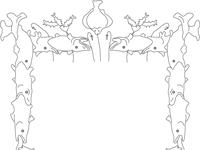 Fig. 4.36. Image of hooked fish, after marginalia in The Hours of Catherine of Cleves. Fig. 4.36. Image of hooked fish, after marginalia in The Hours of Catherine of Cleves.
|
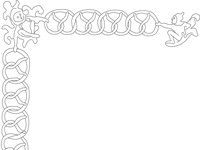 Fig. 4.37. Enlinked pretzels, after marginalia in The Hours of Catherine of Cleves. Fig. 4.37. Enlinked pretzels, after marginalia in The Hours of Catherine of Cleves.
|
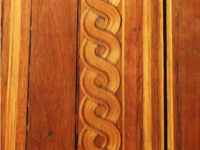 Fig. 4.38. "Chain" border detail from cabinets at Gubbio. Fig. 4.38. "Chain" border detail from cabinets at Gubbio.
|
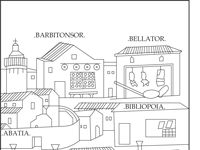 Fig. 4.39. Drawing of a fortified city on a hill. Fig. 4.39. Drawing of a fortified city on a hill.
|
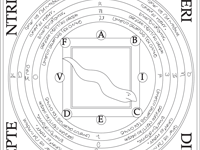 Fig. 4.40. A concentric combinatorial memory wheel. Fig. 4.40. A concentric combinatorial memory wheel.Extended Caption 17 |
 Fig. 4.41. Astrolabe and armillary sphere, Urbino studiolo. Fig. 4.41. Astrolabe and armillary sphere, Urbino studiolo.Extended Caption 17 |
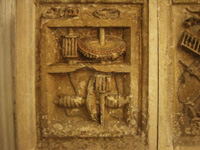 Fig. 4.42. Triple hoist mechanism carved by Ambrogio Barrocci after drawing by Francesco di Giorgio. Fig. 4.42. Triple hoist mechanism carved by Ambrogio Barrocci after drawing by Francesco di Giorgio.Extended Caption 18 |
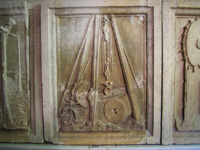 Fig. 4.43. Column hoist carved by Ambrogio Barrocci after drawing by Francesco di Giorgio. Fig. 4.43. Column hoist carved by Ambrogio Barrocci after drawing by Francesco di Giorgio.
|
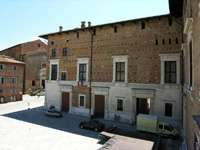 Fig. 4.44. "Unfinished" façade of Urbino's ducal palace. Fig. 4.44. "Unfinished" façade of Urbino's ducal palace.
|
 Fig. 4.45. Superimposition of human and building profiles. Fig. 4.45. Superimposition of human and building profiles.Extended Caption 19 |
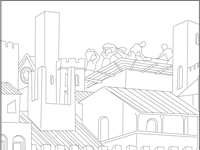 Fig. 4.46. Detail of The Effects of Good Government. Fig. 4.46. Detail of The Effects of Good Government.
|
 Fig. 4.47. East wall of Urbino studiolo. Fig. 4.47. East wall of Urbino studiolo.
|
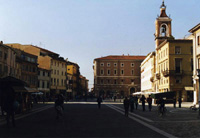 Fig. 4.48. Piazza del Foro, Rimini. Fig. 4.48. Piazza del Foro, Rimini.Extended Caption 20 |
Chapter 5
 Fig. 5.1. Northwest wall, Gubbio studiolo. Fig. 5.1. Northwest wall, Gubbio studiolo.
|
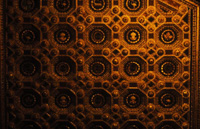 Fig. 5.2. Ceiling of Urbino studiolo in late afternoon light. Fig. 5.2. Ceiling of Urbino studiolo in late afternoon light.
|
 Fig. 5.3. Detail of ceiling, Gubbio studiolo. Fig. 5.3. Detail of ceiling, Gubbio studiolo.
|
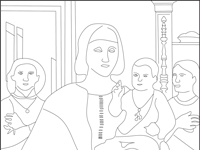 Fig. 5.4. The Madonna of Senigallia, after Piero della Francesca. Fig. 5.4. The Madonna of Senigallia, after Piero della Francesca.Extended Caption 21 |
 Fig. 5.5. Detail from Piero della Francesca's Brera Altarpiece. Fig. 5.5. Detail from Piero della Francesca's Brera Altarpiece.Extended Caption 21 |
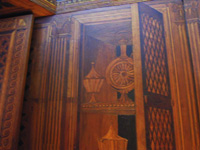 Fig. 5.6. Glass mirror and vessels, Urbino studiolo. Fig. 5.6. Glass mirror and vessels, Urbino studiolo.Extended Caption 21 |
Chapter 6
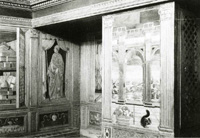 Fig. 6.1. Federico da Montefeltro in the robes of a humanist scholar. Fig. 6.1. Federico da Montefeltro in the robes of a humanist scholar.
|
 Fig. 6.2. The city of Urbino and the ducal palace. Fig. 6.2. The city of Urbino and the ducal palace.
|
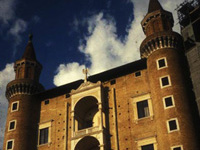 Fig. 6.3. The turrets of the ducal palace. Fig. 6.3. The turrets of the ducal palace.
|
 Fig. 6.4. Axonometric detail of the Urbino ducal palace. Fig. 6.4. Axonometric detail of the Urbino ducal palace.
|
 Fig. 6.5. View from loggia, outside Urbino studiolo. Fig. 6.5. View from loggia, outside Urbino studiolo.
|
 Fig. 6.6. The subterranean stables at Urbino's ducal palace. Fig. 6.6. The subterranean stables at Urbino's ducal palace.
|
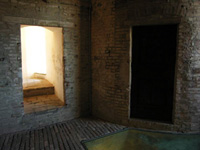 Fig. 6.7. Access from the stables to the duke's thermal bath (left) and private stairtower (right). Fig. 6.7. Access from the stables to the duke's thermal bath (left) and private stairtower (right).
|
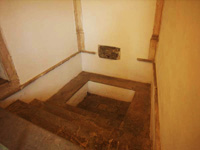 Fig. 6.8. The waters of the thermal bath were heated by a kitchen fireplace on the other side of the wall. Fig. 6.8. The waters of the thermal bath were heated by a kitchen fireplace on the other side of the wall.
|
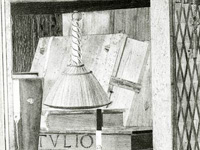 Fig. 6.9. Scopetta, north wall, Urbino studiolo. Fig. 6.9. Scopetta, north wall, Urbino studiolo.
|
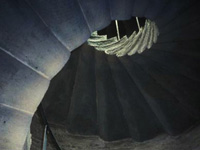 Fig. 6.10. The duke's private spiral staircase. Fig. 6.10. The duke's private spiral staircase.
|
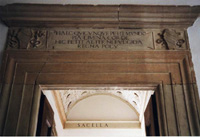 Fig. 6.11. Entrance to the Tempietti. Fig. 6.11. Entrance to the Tempietti.
|
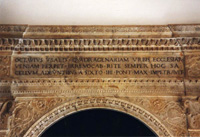 Fig. 6.12. Entrance to Capella del Perdono. Fig. 6.12. Entrance to Capella del Perdono.
|
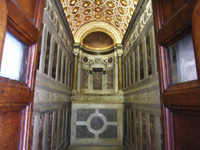 Fig. 6.13. Capella del Perdono, from entrance. Fig. 6.13. Capella del Perdono, from entrance.
|
 Fig. 6.14. Detail of The Effects of Good Government. Fig. 6.14. Detail of The Effects of Good Government.Extended Caption 22 |
 Fig. 6.15. Cabinet with hunting horn, Gubbio studiolo. Fig. 6.15. Cabinet with hunting horn, Gubbio studiolo.Extended Caption 22 |
 Fig. 6.16. Tau-shaped tuning key, Gubbio studiolo. Fig. 6.16. Tau-shaped tuning key, Gubbio studiolo.Extended Caption 22 |
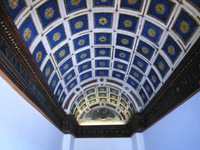 Fig. 6.17. The portraits of the muses conceived for the Tempietto. Fig. 6.17. The portraits of the muses conceived for the Tempietto.
|
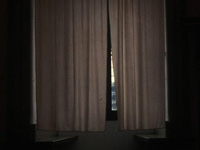 Fig. 6.18. Window seat in the duke's dressing room. Fig. 6.18. Window seat in the duke's dressing room.
|
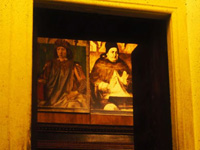 Fig. 6.19. Urbino studiolo from Federico's entrance. Fig. 6.19. Urbino studiolo from Federico's entrance.
|
 Fig. 6.20. Petrarch, among the illustrious men in the west wall of the Urbino studiolo. Fig. 6.20. Petrarch, among the illustrious men in the west wall of the Urbino studiolo.
|
 Fig. 6.21. St. Jerome, among the illustrious men in the north wall of the Urbino studiolo. Fig. 6.21. St. Jerome, among the illustrious men in the north wall of the Urbino studiolo.
|
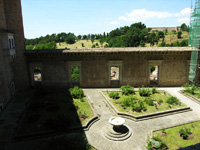 Fig. 6.22. A passageway connecting the duke's and duchess's quarters. Fig. 6.22. A passageway connecting the duke's and duchess's quarters.
|
 Fig. 6.23. Triple hoist mechanism carving. Fig. 6.23. Triple hoist mechanism carving.Extended Caption 23 |
 Fig. 6.24. "Unfinished" façade of Urbino's ducal palace. Fig. 6.24. "Unfinished" façade of Urbino's ducal palace.Extended Caption 23 |
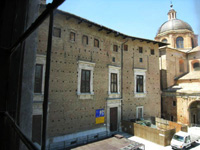 Fig. 6.25. The second "wing" of the entry façade. Fig. 6.25. The second "wing" of the entry façade.Extended Caption 23 |
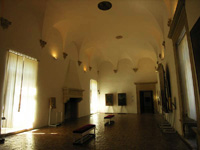 Fig. 6.26. Sala del Conversazione. Fig. 6.26. Sala del Conversazione.Extended Caption 23 |
 Fig. 6.27. Column hoist carving. Fig. 6.27. Column hoist carving.
|
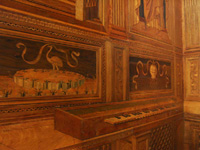 Fig. 6.28. Clavichord, inlaid with metal strings, Urbino studiolo. Fig. 6.28. Clavichord, inlaid with metal strings, Urbino studiolo.
|
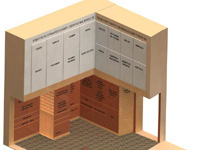 Fig. 6.29. View to southeast corner of Urbino studiolo. Fig. 6.29. View to southeast corner of Urbino studiolo.
|
 Fig. 6.30. Detail of the virtues from the Allegory of Good Government. Fig. 6.30. Detail of the virtues from the Allegory of Good Government.
|
 Fig. 6.31. Double Portrait of Federico and Guidobaldo da Montefeltro. Fig. 6.31. Double Portrait of Federico and Guidobaldo da Montefeltro.
|
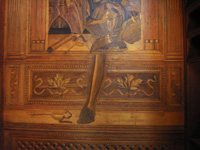 Fig. 6.32. Close proximity of olive branch and greave (peace and war). Fig. 6.32. Close proximity of olive branch and greave (peace and war).
|
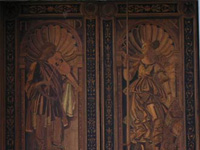 Fig. 6.33. Intarsiated figures of Apollo and Minerva. Fig. 6.33. Intarsiated figures of Apollo and Minerva.
|
 Fig. 6.34. Illustrious men, north wall, Urbino studiolo. Fig. 6.34. Illustrious men, north wall, Urbino studiolo.
|
 Fig. 6.35. Illustrious men, east wall, Urbino studiolo. Fig. 6.35. Illustrious men, east wall, Urbino studiolo.
|
 Fig. 6.36. Illustrious men, south wall, Urbino studiolo. Fig. 6.36. Illustrious men, south wall, Urbino studiolo.
|
 Fig. 6.37. Illustrious men, west wall, Urbino studiolo. Fig. 6.37. Illustrious men, west wall, Urbino studiolo.
|
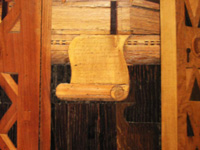 Fig. 6.38. Note in northwest wall of Gubbio studiolo. Fig. 6.38. Note in northwest wall of Gubbio studiolo.
|
 Fig. 6.39. Axonometric detail of the Urbino ducal palace. Fig. 6.39. Axonometric detail of the Urbino ducal palace.
|
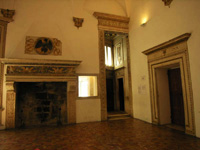 Fig. 6.40. The salon d'udienza (audience chamber). Fig. 6.40. The salon d'udienza (audience chamber).
|
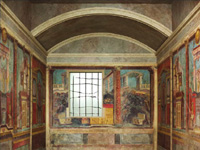 Fig. 6.41. The cubiculum from the villa of P. Fannius Synistor, 50-40 BCE. Fig. 6.41. The cubiculum from the villa of P. Fannius Synistor, 50-40 BCE.
|
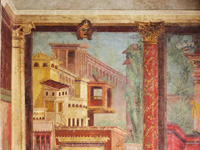 Fig. 6.42. Mnemonic ornament from the cubiculum from the villa of P. Fannius Synistor, 50-40 BCE. Fig. 6.42. Mnemonic ornament from the cubiculum from the villa of P. Fannius Synistor, 50-40 BCE.
|
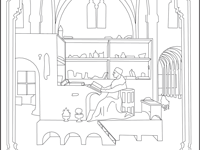 Fig. 6.43. Drawing of St. Jerome in His Study. Fig. 6.43. Drawing of St. Jerome in His Study.
|
 Fig. 6.44. Operable intarsia panels folded open, Urbino studiolo. Fig. 6.44. Operable intarsia panels folded open, Urbino studiolo.
|
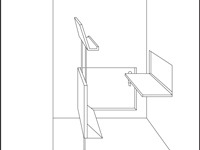 Fig. 6.45. Reconstruction of lectern arrangement. Fig. 6.45. Reconstruction of lectern arrangement.
|
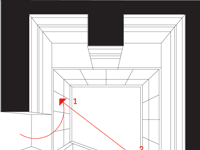 Fig. 6.46. Worm's eye view of two station points for appreciating Federico's faithfulness. Fig. 6.46. Worm's eye view of two station points for appreciating Federico's faithfulness.
|
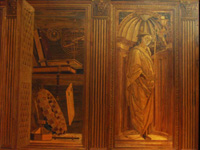 Fig. 6.47. Images of Faith, personified and symbolized in south wall, Urbino studiolo. Fig. 6.47. Images of Faith, personified and symbolized in south wall, Urbino studiolo.
|
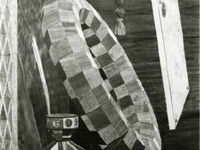 Fig. 6.48. Inkwell with letters FEDE and rosary above, in south wall, Urbino studiolo. Fig. 6.48. Inkwell with letters FEDE and rosary above, in south wall, Urbino studiolo.
|
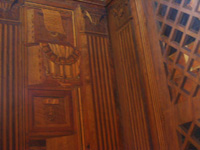 Fig. 6.49. Box-drawers in northwest corner of Urbino studiolo. Fig. 6.49. Box-drawers in northwest corner of Urbino studiolo.
|
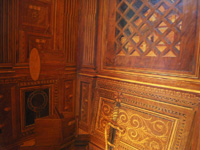 Fig. 6.50. Box-drawers in northwest corner of Urbino studiolo. Fig. 6.50. Box-drawers in northwest corner of Urbino studiolo.
|
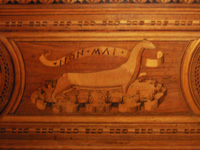 Fig. 6.51. Image of ermine and phrase "non mai," Gubbio studiolo. Fig. 6.51. Image of ermine and phrase "non mai," Gubbio studiolo.
|
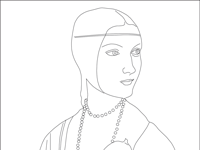 Fig. 6.52. Leonardo da Vinci's portrait of Cecilia Gallerani. Fig. 6.52. Leonardo da Vinci's portrait of Cecilia Gallerani.
|
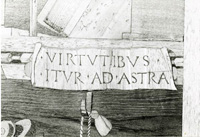 Fig. 6.53. Detail of "virtutibus itur ad astra," north wall, Urbino studiolo. Fig. 6.53. Detail of "virtutibus itur ad astra," north wall, Urbino studiolo.
|
 Fig. 6.54. Cardinal Bessarion, among the illustrious men in the south wall of the Urbino studiolo. Fig. 6.54. Cardinal Bessarion, among the illustrious men in the south wall of the Urbino studiolo.Extended Caption 24 |
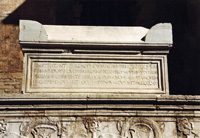 Fig. 6.55. Pletho's sarcophagus, ensconced in the southwest wall of the Tempio Malatestiano. Fig. 6.55. Pletho's sarcophagus, ensconced in the southwest wall of the Tempio Malatestiano.
|
 Fig. 6.56. Papagalli and mechanical clock, Urbino studiolo. Fig. 6.56. Papagalli and mechanical clock, Urbino studiolo.
|
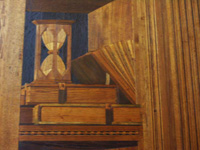 Fig. 6.57. Hourglass, Urbino studiolo. Fig. 6.57. Hourglass, Urbino studiolo.
|
 Fig. 6.58. Ingenioq cabinet, Gubbio studiolo. Fig. 6.58. Ingenioq cabinet, Gubbio studiolo.
|
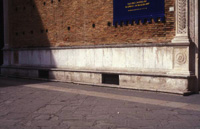 Fig. 6.59. Bench along palace façade. Fig. 6.59. Bench along palace façade.Extended Caption 25 |
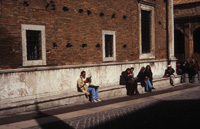 Fig. 6.60. Palace bench, continued. Fig. 6.60. Palace bench, continued.Extended Caption 25 |
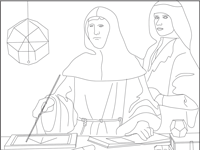 Fig. 6.61. Portrait of Fra Luca Pacioli. Fig. 6.61. Portrait of Fra Luca Pacioli.Extended Caption 25 |
Extended Caption 25 |
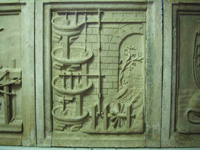 Fig. 6.63. Formella carving. Fig. 6.63. Formella carving.
|
 Fig. 6.64. Hunting horn suspended in the Gubbio studiolo. Fig. 6.64. Hunting horn suspended in the Gubbio studiolo.
|
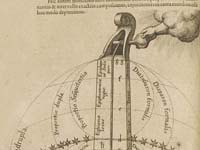 Fig. 6.65. Monochord. Fig. 6.65. Monochord.
|
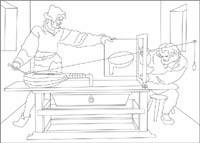 Fig. 6.66. Albrecht Dürer's demonstration of perspectival composition. Fig. 6.66. Albrecht Dürer's demonstration of perspectival composition.Extended Caption 26 |
 Fig. 6.67. Clavichord, Urbino studiolo. Fig. 6.67. Clavichord, Urbino studiolo.
|
 Fig. 6.68. Southeast corner of Urbino intarsia, with miniature studiolo at left and an organ at right. Fig. 6.68. Southeast corner of Urbino intarsia, with miniature studiolo at left and an organ at right.
|
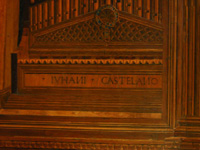 Fig. 6.69. Juhani Castelano, Florentine organ-maker. Fig. 6.69. Juhani Castelano, Florentine organ-maker.
|
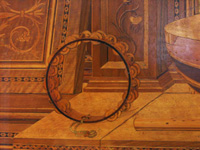 Fig. 6.70. The jingle ring evokes Erato, muse of lyric and love poetry. Fig. 6.70. The jingle ring evokes Erato, muse of lyric and love poetry.
|
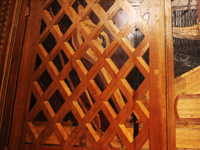 Fig. 6.71. Rebec and its bow, partially obscured behind a cabinet door. Fig. 6.71. Rebec and its bow, partially obscured behind a cabinet door.
|
 Fig. 6.72. The military instruments of the pipe and tabor, Gubbio studiolo. Fig. 6.72. The military instruments of the pipe and tabor, Gubbio studiolo.
|
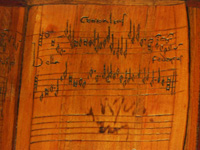 Fig. 6.73. Intarsiated and burnished score of Bella gerit, Urbino studiolo. Fig. 6.73. Intarsiated and burnished score of Bella gerit, Urbino studiolo.
|
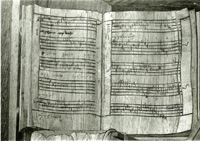 Fig. 6.74. Intarsiated and burnished score of J'ay pris amour, Urbino studiolo. Fig. 6.74. Intarsiated and burnished score of J'ay pris amour, Urbino studiolo.
|
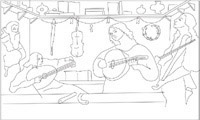 Fig. 6.75. Carpaccio's sketch of a monk listening to musicians tuning up in a studiolo. Fig. 6.75. Carpaccio's sketch of a monk listening to musicians tuning up in a studiolo.
|
 Fig. 6.76. Chess pieces, Urbino studiolo. Fig. 6.76. Chess pieces, Urbino studiolo.
|
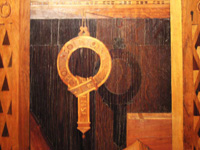 Fig. 6.77. Order of the Garter, Gubbio studiolo. Fig. 6.77. Order of the Garter, Gubbio studiolo.Extended Caption 27 |
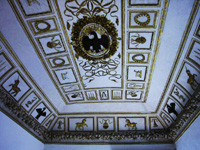 Fig. 6.78. Ceiling of quarters reserved for the King of England, in the Urbino ducal palace. Fig. 6.78. Ceiling of quarters reserved for the King of England, in the Urbino ducal palace.Extended Caption 27 |
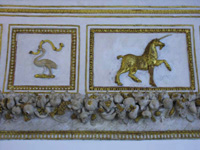 Fig. 6.79. Detail from ceiling of the King of England's quarters. Fig. 6.79. Detail from ceiling of the King of England's quarters.Extended Caption 27 |
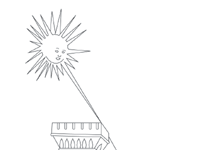 Fig. 6.80. Francesco di Giorgio asserted that music is necessary for the conference and proportion of any building. Fig. 6.80. Francesco di Giorgio asserted that music is necessary for the conference and proportion of any building.
|
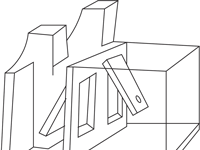 Fig. 6.81. Leonardo's architectonic interpretation of the heart as a furnace. Fig. 6.81. Leonardo's architectonic interpretation of the heart as a furnace.
|
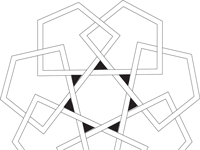 Fig. 6.82. Heptagonal diagram after figure at Urbino studiolo. Fig. 6.82. Heptagonal diagram after figure at Urbino studiolo.Extended Caption 28 |
 Fig. 6.83. Bench wheels, Urbino studiolo. Fig. 6.83. Bench wheels, Urbino studiolo.Extended Caption 29 |
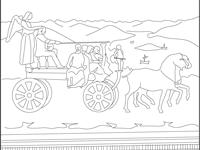 Fig. 6.84. Federico on biga with cardinal virtues. Fig. 6.84. Federico on biga with cardinal virtues.Extended Caption 29 |
 Fig. 6.85. Civic space, east wall of Urbino studiolo. Fig. 6.85. Civic space, east wall of Urbino studiolo.
|
 Fig. 6.86. Ideal city, painted at Urbino, late quattrocento. Fig. 6.86. Ideal city, painted at Urbino, late quattrocento.
|
 Fig. 6.87. Lute with broken strings, Urbino studiolo. Fig. 6.87. Lute with broken strings, Urbino studiolo.
|
 Fig. 6.88. North corner of Gubbio studiolo. Fig. 6.88. North corner of Gubbio studiolo.
|
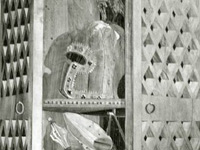 Fig. 6.89. Federico's helmet and scepter, Gubbio studiolo. Fig. 6.89. Federico's helmet and scepter, Gubbio studiolo.Extended Caption 30 | |
Chapter 7
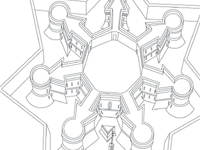 Fig. 7.1. Heptagonal fortress. Fig. 7.1. Heptagonal fortress.
|
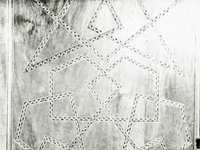 Fig. 7.2. Heptagonal figure from area of Urbino studiolo. Fig. 7.2. Heptagonal figure from area of Urbino studiolo.
|
